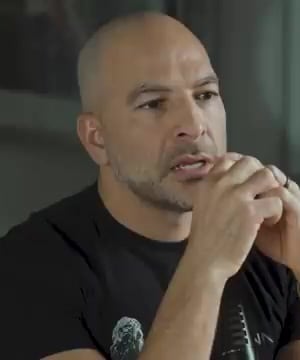Provide an extensive summary of what Courtney Conley says of foot health?
Sources:
Courtney Conley, an International Foot and Gait Specialist, shares extensive insights on foot health, emphasizing the importance of proper movement patterns, especially following surgeries or conditions that compromise mobility. She discusses enhancing mobility and function through training unaffected joints and adopting proper footwear and movement modifications to accommodate changes in the foot's structure, such as with hallux rigidus 1.
Regarding footwear, Courtney explicitly recommends wide toe boxes to allow natural foot movement and prevent complications like bunions. She explains how some companies misleadingly design shoes that appear to offer more room while still constricting the feet 2.
She also discusses functional footwear, suggesting shoes with minimal heel-to-toe drop and appropriate support to encourage natural foot function and alleviate strain on foot muscles 3. Courtney highlights the effectiveness of foot-strengthening exercises and proper footwear in improving foot muscle health through a comprehensive study 4.
Furthermore, her early passion for foot health originated from her personal challenges with foot pain as a ballet dancer, which influenced her professional focus. Despite traditional training that often leans towards surgical or orthotic interventions, she pursued a more holistic understanding of foot mechanics, leading her to emphasize proactive and preventative foot care 5.
Overall, Courtney Conley advocates for a balanced approach that includes both external supports such as appropriate footwear and internal supports through exercises to maintain optimal foot health.
RELATED QUESTIONSWhat foot exercises does she recommend?
Sources:
Courtney Conley recommends the use of toe spacers as a foundational exercise for foot health, particularly beneficial for conditions like bunions and neuromas. She advises starting with toe spacers by walking around barefoot for five minutes daily at home. This initial period helps the feet adjust gradually to prevent discomfort and calluses. Over time, this can be increased, and eventually, spacers can be worn with shoes as part of daily foot care. Courtney underscores this as a method of exercising the feet, likening it to having almost instant, beneficial effects on foot strength and alignment 1.
RELATED QUESTIONSWhat were the key take aways of this episode?
Sources:
The key takeaways from the episode "The Art of Confidence: Find It, Grow It and Use It to Your Advantage" with are centered around personal growth through better self-confidence. Here are the summarized key points:
-
Immediate Application: The episode provided actionable insights that the listeners could immediately apply to their lives to enhance their self-confidence.
-
Audience Engagement: Chris Hutchins expressed a hope that the audience enjoyed the episode as much as he did, indicating the episode’s engaging and valuable content.
-
Sharing and Community: The call for listeners to share the episode with others suggests its perceived value and the importance of spreading such beneficial content within communities.
These insights are drawn from specific aspects of the episode and listener reactions expressed by 1.
RELATED QUESTIONS-
I was asking the key takeaways of the episode with Petter Attia and Courtney Conley
Sources:
In the episode featuring and , the primary focus was on foot health, specifically the anatomy and functionality of foot muscles in enhancing mobility and preventing injuries. Here are the key takeaways from their discussion:
-
Importance of Foot Muscles: Courtney emphasized the role of various foot muscles in maintaining proper foot function and stability. One significant muscle mentioned was the flexor digitorum brevis, crucial for decelerating toe extension during walking and preventing plantar fasciitis 1.
-
Footwear and Foot Pain: Courtney shared her journey from a ballet dancer to a foot health specialist, linking her personal experiences with foot pain to her career choice. Her transition from traditional orthotic practices to a more nuanced understanding of foot mechanics was highlighted 2.
-
Challenges of Ankle Sprains: They discussed how repeated mild ankle sprains could affect overall foot stability, stressing the importance of addressing ligament and nerve issues promptly to avoid long-term mobility problems 3.
-
Childhood Foot Development: The significance of sensory input in the early stages of foot development was discussed, highlighting how different surfaces like sand and grass can aid in developing stronger, healthier feet in children 4.
-
Toe Strength and Stability: The assessment of toe strength was covered, with specific diagnostic tools mentioned that help in identifying potential weaknesses that could lead to issues like falls or improper gait patterns 5.
These insights provide a comprehensive view of the importance of maintaining foot health through proper muscle function, footwear choices, and early sensory experiences.
RELATED QUESTIONS-
Can you provide a detail explanation of Importance of point 1, 2, 3, 4, 5 for my learning and studies?
Sources:
Here are the detailed explanations for each key point discussed by and :
-
Importance of Foot Muscles:
- Peroneus Brevis and Peroneus Longus: These muscles are critical for lateral ankle stability. Peroneus Brevis aids in everting the foot and stabilizing the lateral aspect by attaching to the fifth metatarsal. Peroneus Longus crosses underneath the foot to the medial side, helping to flatten the arch upon contraction. This action is crucial for stable push-off during walking or running, preventing the foot from eversion that could lead to ankle sprains or altered gait patterns. The stability and function of these muscles are vital in maintaining not just foot health, but also avoiding complications like functional hallux limitus, where inhibition in big toe movement due to muscle weakness causes joint pain and mobility issues 1.
-
Footwear and Foot Pain:
- The discussion highlighted how modern footwear, particularly running shoes with excessive cushioning and support, can make the feet "lazy." This diminished engagement leads to weakened foot and ankle muscles over time. Ironically, while these shoes are designed to prevent injuries, they may instead contribute to a higher incidence of issues like shin splints, plantar fasciitis, and Achilles tendinopathy by not allowing the foot to function naturally. Emphasis was placed on the notion that relying less on shoe technology and more on enhancing the foot's natural mechanics could be more beneficial for foot health 2.
-
Challenges with Ankle Sprains:
- Weakness or dysfunction in the peroneal muscles following an ankle sprain can lead to significant stability issues. explains that if these muscles do not perform adequately, the first metatarsal cannot properly anchor to the ground. This lack of stability at the first ray can result in recurrent sprains or discomfort in the big toe due to improper loading and subsequent joint issues. These dysfunctions can eventually lead to arthritic changes if not corrected, underscoring the importance of robust peroneal muscles for lateral ankle stability and overall foot health 1.
-
Childhood Foot Development:
- Although not directly covered in the clips, the principles discussed stress the importance of sensory experiences and varied terrains in early childhood for developing robust foot mechanics. Engaging different muscles and reflexes by walking on surfaces like sand or grass can strengthen the foot's structural integrity and sensory feedback pathways, potentially leading to better foot health and fewer musculoskeletal issues later in life.
-
Toe Strength and Stability:
- The big toe plays a critical role in foot stability, particularly during the gait cycle. A strong big toe supports effective push-off, which enhances athletic performance and reduces injury risk by ensuring that other muscles do not have to compensate for its weakness. Weaknesses in the big toe can lead to decreased performance and an increased likelihood of injuries. Effective training and focus on strengthening the big toe and its supportive muscles are crucial for maintaining foot stability and overall function 3.
These detailed insights offer a deeper understanding of the complexities of foot mechanics and the significant role that muscle strength and proper footwear play in maintaining foot health.
RELATED QUESTIONS-










